Key Takeaways:
- Cats, especially senior or those with mobility issues, can benefit from using ramps for easier access to high places.
- The design and placement of the ramp are crucial for acceptance; it should be stable, have a gentle slope, and be covered with a non-slip surface.
- Introducing a ramp to a cat requires patience and positive reinforcement to ensure they feel comfortable and safe using it.
Cats are known for their agility and love for high perches, but what happens when jumping is no longer an easy feat for our feline friends? Whether due to age, injury, or simply a preference for a more gradual ascent, the question arises: will cats use a ramp? This comprehensive guide will explore the benefits of ramps for cats, the factors that influence their use, and how to encourage your kitty to embrace this convenient option.

Understanding the Need for Cat Ramps
For many pet owners, the sight of their cat effortlessly leaping from the floor to the couch or a high bed is a familiar one. However, as cats enter their senior years or face mobility problems, these jumps can become challenging. A cat ramp, much like dog stairs, can provide a gentler slope that eases the strain on joints, making it a thoughtful addition to your pet's furniture.
The Benefits of Ramps for Senior and Disabled Cats
Older cats and those with trouble walking can find great relief in having a ramp. With a less steep incline than individual steps, ramps offer a smooth, continuous path to their favorite spots. This can significantly improve the quality of life for cats with joint problems, as it allows them to continue accessing high spots without pain or discomfort.
Choosing the Best Cat Ramps
When selecting the best cat ramps, consider factors such as the angle of the slope, the stability of the structure, and the surface material. A carpeted ramp with a plush carpet can provide the necessary traction for a cat's claws, while high-quality wood construction ensures durability. Safety rails or side rails can also add an extra layer of security, giving your cat the confidence to climb.
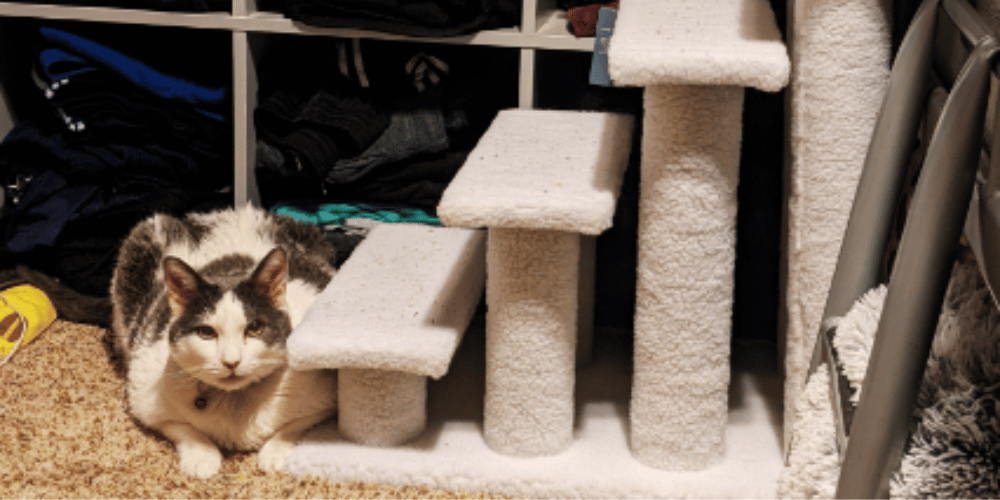
Design and Placement Matter
The success of a ramp in your home depends not only on its design but also on its placement. A long ramp with a low slope may be more comfortable for your cat to use, but it also requires more floor space. Conversely, a ramp with a steeper incline will conserve space but may not be as easy for your cat to navigate. Finding the right balance is key to making the ramp a useful tool for your furry friend.
How to Introduce Your Cat to a Ramp
Introducing a new piece of furniture like a ramp to your cat requires patience. Start by placing the ramp next to their favorite sofa or bed, ensuring it has a non-slip, carpeted surface for secure footing. Encourage your cat to explore the ramp by placing treats along the way or using their favorite toys as a lure.
Training Tips for Ramp Use
Training your cat to use the ramp may take time. Begin by leading them onto the ramp with treats or a toy. Praise them when they take steps on their own, and gradually reduce the number of treats as they become more comfortable. Remember, positive reinforcement is the most effective method to encourage your cat to use the ramp regularly.
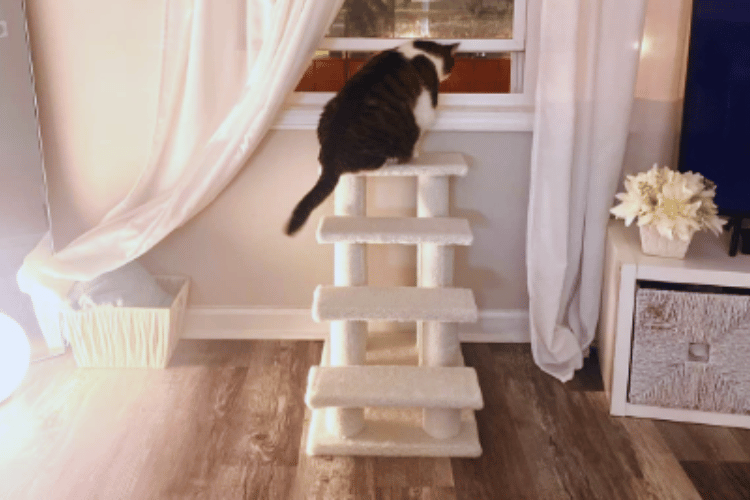
Safety Features for Cat Ramps
Safety is paramount when it comes to pet ramps. Look for features like safety rails, which prevent falls, and ensure the ramp is sturdy enough to support your cat's weight. A ramp with a flat surface and no sharp edges will also help prevent injuries.
The Role of Texture and Traction
The texture of the ramp's surface plays a significant role in its usability. A carpeted surface offers better traction than a smooth one, which can help prevent slipping. If your ramp isn't already covered, consider adding a piece of plush carpet or a non-slip mat to create a more inviting and secure path for your cat.
Space-Saving Solutions for Small Homes
For pet owners with limited space, finding a ramp that fits can be a challenge. Look for ramps that are easily transportable or have features like easy storage. Some ramps are designed to fold flat or can be disassembled when not in use, making them a convenient option for smaller living areas.
Innovative Materials for Pet Ramps
When considering a pet ramp for your feline friend, the material used can make a significant difference in how well it is received. High-quality wood ramps offer a sturdy and aesthetically pleasing option that can blend seamlessly with your home decor. They provide a solid surface for your cat to walk on, which can be especially important for senior cats who need extra support. Additionally, wood ramps can be customized with various textures to ensure your cat's claws have sufficient grip, enhancing their sense of security as they ascend and descend.

In contrast, for pet owners looking for a more lightweight and portable solution, ramps made from advanced plastics or metals can be a great alternative. These materials often allow for folding designs, which take up less space when not in use, making them ideal for small homes or apartments. They can also be easier to clean and maintain. When selecting a ramp, ensure that it has a non-slip surface to prevent slips and falls, and consider the weight capacity to ensure it can safely support your furry friends.
Special Considerations for Senior Cats Senior cats often face mobility challenges that can make climbing and jumping more difficult. As their joints age, these feline friends may benefit significantly from the addition of cat steps or ramps in their environment. By providing a gentle incline, you're supporting pets through their golden years, ensuring they can still reach their favorite perches without the strain on their aging bodies. High-quality wood ramps with anti-slip surfaces can offer the stability and support needed for your senior cat to navigate their space safely.
For the older feline demographic, it's crucial to consider the wear and tear on their paws and claws. A senior cat's claws may not retract as efficiently, and their pads can be more sensitive, making the texture of the ramp an important factor. Ramps with soft, padded surfaces can prevent discomfort and provide the necessary grip for a secure footing. Additionally, integrating ramps with lower heights can help prevent injuries that could occur from a senior cat attempting to jump from too high.
Rewarding Your Cat for Ramp Use Encouraging your cat to use a new ramp can be as simple as using treats as positive reinforcement. When introducing your cat to the ramp, place a treat at various points along the incline to motivate them to explore and become comfortable with the new structure. This method not only creates positive associations with the ramp but also turns the learning process into a fun and rewarding game for your pet.
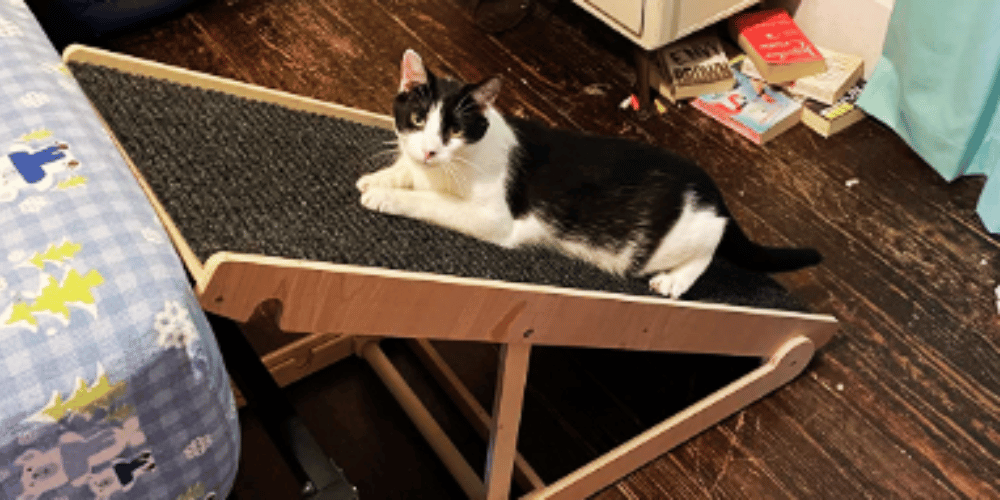
Moreover, treats can be a powerful tool in reinforcing continued use of the ramp. Once your cat has become accustomed to the ramp, sporadically placing treats on it can keep their interest alive. It's essential to use treats judiciously to maintain your cat's health, especially if they are a senior cat with dietary restrictions. High-quality, nutritious treats can serve as a healthy incentive, making the ramp a source of both comfort and enjoyment for your feline friend.
The Convenience of Adjustable Pet Steps
Pet steps are an excellent alternative to ramps, offering pets the ability to reach their favorite spots without having to jump. For homes with limited space, pet stairs can be a more compact solution, allowing your cat to navigate to higher surfaces with ease. Look for options with an individual step depth that matches your cat's stride, ensuring they can use the steps comfortably. Typically, a set of three to four steps is sufficient for most home furniture heights.
Adjustable pet steps are particularly beneficial as they can be tailored to the specific needs of your pet. For instance, if your cat likes to gaze out of the car window during trips, adjustable steps can be positioned to allow easy access to the car seat. The top step should be level with the surface your cat is trying to reach. Always use a tape measure to determine the right height before purchasing or adjusting the steps. Additionally, some models come with storage compartments, offering a place to stash treats or toys, which can be a helpful incentive when training your cat to use the steps.
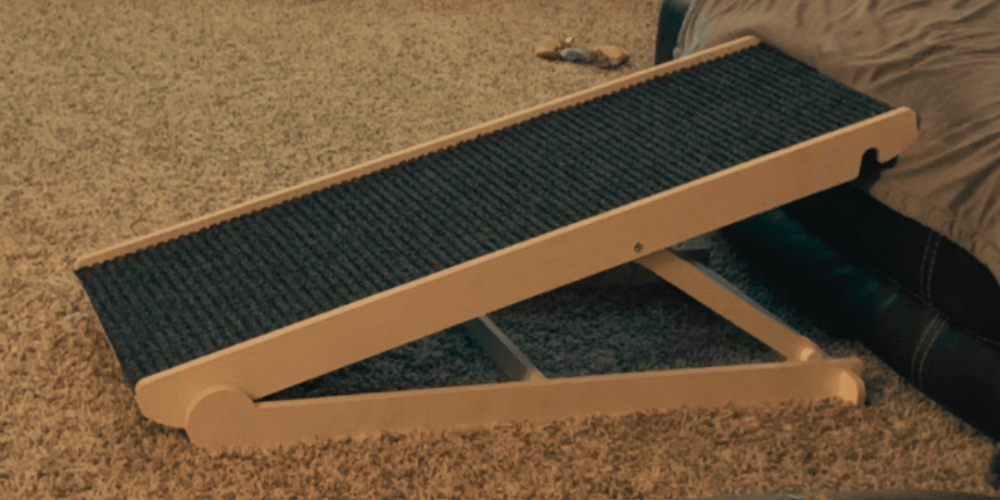
The Aesthetic Appeal of Cat Ramps
While functionality is crucial, you'll also want a ramp that complements your home decor. Many ramps come in a variety of styles and finishes, from carpeted surfaces that match your furniture to ramps made from high-quality wood that add a touch of elegance to the room.
Durability and Longevity
Investing in a durable ramp means it will last through your cat's senior years. Look for ramps built with high-quality materials that can withstand repeated use. A well-constructed ramp not only ensures safety but also provides long-term value.
Customizing Ramps for Your Cat's Needs
Every cat is unique, and so are their needs. Customizing a ramp with specific features like a gentler slope or extra cushioning can make all the difference. Some pet owners even build their own ramps, tailoring the dimensions and materials to their cat's preferences.
The Versatility of Ramps for Multi-Pet Households
If you have both cats and dogs, a ramp can serve as a multi-purpose solution. While designed with feline friends in mind, many cat ramps are also suitable for dogs, especially smaller breeds with similar mobility issues.
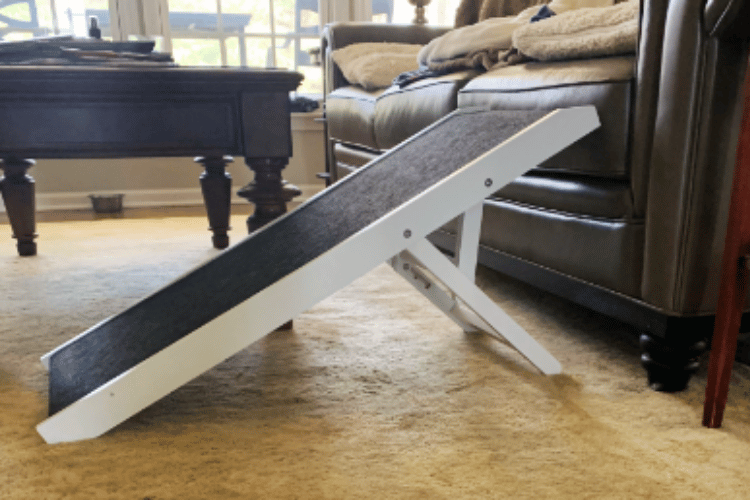
Alternatives to Ramps: Cat Stairs and Steps
For cats that prefer a more defined path, cat stairs or steps may be a better option. These provide individual levels for your cat to climb, which some may find more natural than a ramp. However, stairs require more effort to ascend and may not be suitable for cats with severe mobility issues.
Combining Ramps with Other Cat Furniture
To maximize the utility of a ramp, consider integrating it with other cat furniture like a cat tree or closet shelves. This can create a comprehensive climbing system that allows your cat to navigate the room with ease, from floor to high perches.
The Importance of Maintenance
Regular maintenance of your cat ramp is essential to ensure its safety and longevity. Check for any signs of wear and tear, such as loose carpeting or splintered wood, and make repairs as needed. Keeping the ramp clean will also prevent the buildup of dirt and debris, which can affect traction.
When to Consider a Ramp for Your Cat
If you notice your cat hesitating before jumps, struggling to reach high places, or showing signs of discomfort after climbing, it may be time to consider a ramp. Early intervention can help prevent further strain on your cat's body and improve their overall well-being.
The Impact of Ramps on Cat Behavior
The addition of a ramp can have a positive impact on your cat's behavior. By providing them with easier access to their favorite spots, ramps can reduce stress and increase activity levels, leading to a happier, more content cat.
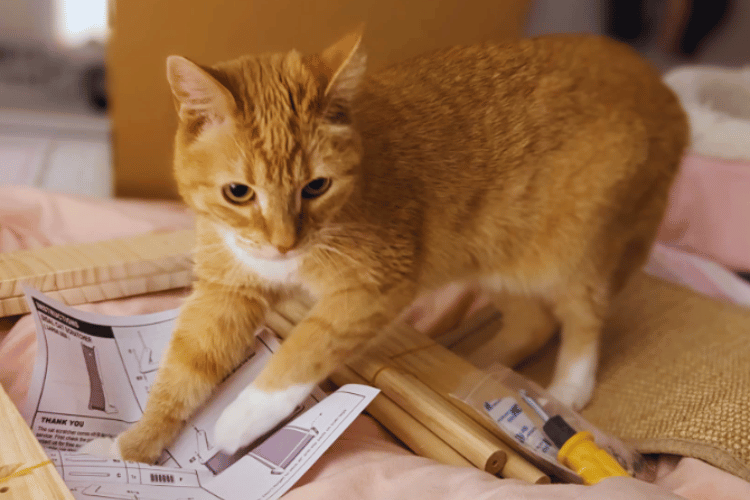
Summary
Ramps can be a valuable addition to a home with cats, particularly for those in their senior years or with mobility issues. The right ramp can provide safe, comfortable access to high places, improving your cat's quality of life. When choosing a ramp, consider factors like slope, stability, and surface texture, and take the time to train your cat using positive reinforcement. With the right approach, most cats will readily use a ramp, enjoying the benefits of easier movement around their home.
FAQ Section
Q: How do I know if my cat needs a ramp? A: If your cat is showing signs of difficulty jumping or climbing, hesitates before leaping, or has been diagnosed with joint problems or other mobility issues, a ramp may be beneficial. It's also a good idea for senior cats to reduce the strain on their bodies.
Q: Can I train an older cat to use a ramp? A: Yes, older cats can be trained to use a ramp. The key is to introduce the ramp slowly and use positive reinforcement, such as treats and praise, to encourage them to use it.
Q: Are ramps or stairs better for cats? A: The choice between ramps and stairs depends on your cat's preferences and mobility. Ramps provide a continuous slope and may be easier for cats with severe mobility issues, while stairs offer a more defined path for climbing. Consider your cat's specific needs when deciding.
Thank you for visiting LegitLists we hope this helps you make a legitimate choice!






